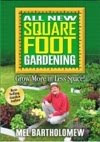When it was first mixed the dough for the gluten-free rye seemed pretty firm and when I used it the following day it was pretty easy to work with, especially for a gluten-free dough, which I can have trouble with. I made a boule with half of it, and it was really very good--Not Rye (but so very close), and Gluten-free!
I used it to make a Ham and Swiss on on Not Rye (but so very close) Panino.
In fact, the only catch is that the recipe calls for Teff flour.
Teff, properly Eragrostis tef, is, according to Wikipedia, "an annual grass, a species of lovegrass native to the northern Ethiopian Highlands of Northeast Africa." The article notes thatCommon names include teff, lovegrass, annual bunch grass (English); Ṭeff/Ṭéff (Amharic, both representing the same sound, an ejective consonant); Ṭaffi/xaffi (Oromo, both representing the same sound); Ṭaff (Tigrinya); and mil éthiopien (French). It is also written as ttheff, tteff, thaff, tcheff, and thaft. The word "tef" is connected by folk etymology to the Ethio-Semitic root "ṭff", which means "lost" (because of the small size of the grain).The Wikipedia article notes that "Teff accounts for about a quarter of total cereal production in Ethiopia," and that "[i]n 1996, the US National Research Council characterized Teff as having the 'potential to improve nutrition, boost food security, foster rural development and support sustainable landcare.'" This may in part be because Teff "is adapted to environments ranging from drought stress to waterlogged soil conditions." Id.
The Wikipedia article also notes that "Teff is high in protein" and "is considered to have an excellent amino acid composition (including all 8 essential amino acids for humans) and has lysine levels higher than wheat or barley." Bob, of Red Mill fame, notes on the package that Teff is "a Nutritional Powerhouse!" The website for The Teff Company, which grows Teff in Idaho, observes that "[o]f the 56 medals available in major athletics championships from 2000 to 2003 (Olympic Games and IAAF World Championships) at marathon, 10,000 meter and 5,000 meter distances, 26 were won by athletes from Ethiopia" and posits that "[i]t is not a coincidence that these athletes ... come from Ethiopia, the land where teff is a significant portion of the daily diet."
Bob also notes that "[d]ue to Teff's size, it is almost impossible to grind in your home mill," but observes that "[w]e are glad to do the work for you." As to size, Wikipedia notes that "[b]ecause of its small seeds (less than 1 mm diameter), one can hold enough in one hand to sow a large area" and that "[t]his property makes teff particularly suited to a seminomadic lifestyle." The website for The Teff Company notes that "[o]ne pound of teff can produce up to one ton of grain in only 12 weeks," and that "[t]hree thousand grains of teff weigh one gram."
Jeff and Zoe indicate in the recipe that Teff is gluten-free, but I noticed that the package I got from Bob's Red Mill did not list it as gluten-free. I suspect that may be because strictly speaking it is not! But, according to Wikipedia, "the gluten in teff does not contain the a-gliadin-fraction that causes celiac disease," so it can be used by people who cannot eat wheat gluten.
So with all this going for it, why is the fact that this recipe calls for Teff a "catch?" The price. Around here Bob's 24 ounce bag goes for about $7. If you want to get serious about it, you can get 5 pounds from The Teff Company for $20, which includes shipping. On the bright side, based on the info on Bob's package, it appears that I can incorporate the Teff I have left into my regular baking.
After making the boule I used the other half of the dough to make an oblong loaf. By the time I got to it, the dough was at the end of its useful life, and had gotten very wet. Unlike the first loaf, this one was too wet to work with, and really sticky. Kind of like working with peanut butter, but not as tasty to lick off your fingers. I had to work in more flour to be able to use it at all (I plead the 5th on what kind of flour I used, but it sure was not Teff).
Once I got the loaf formed, I wanted to control the lengthwise spread, to keep a bigger cross section. Since I was using my Italian bread pan, I used onions as stops.
But the yeasties were not to be denied, and they pushed my onions right out of the way!
Despite, or perhaps because of, the wetness, the dough baked up with a good crumb,
and worked great for a pattie melt with a quinoa salad.
The price of Teff notwithstanding, this was certainly one of my better efforts at gluten-free bread.
The second bread for this assignment was Honey Graham Bread, made, not surprisingly, with honey and graham flour. There was also some cinnamon, which I boosted a bit. I made a full batch instead of the half called for in the assignment, hoping for the best. Once again turning to Wikipedia,
Graham flour is a type of whole wheat flour named after the American Presbyterian minister Rev. Sylvester Graham (1794-1851), an early advocate for dietary reform. According to the Larousse Gastronomique, Graham despised processed white flour and believed that bran was the cure-all for the bad eating habits of his compatriots.Generally, graham flour is more coarsely ground whole wheat flour. The Wikipedia article offers that
Rather than simply grinding the whole grain wheat kernel (bran, germ, and endosperm), in roller-milled graham flour the components are ground separately. The endosperm is ground finely, initially creating white flour. The bran and germ are ground coarsely. The two parts are then mixed back together, creating a coarse-textured flour that bakes and keeps well.Red Mill Bob characterizes his Graham Flour as "coarsely stone ground whole wheat flour made from U.S. #1 dark northern spring wheat."
The recipe called for baking this bread in a loaf pan.


It baked up fine, and was very good, especially toasted.
I also baked two loaves in my Italian bread pan, at 450 using steam. This worked out well too.


Finally, since I had Honey Graham dough, I could not resist making Honey Graham Crackers.
I rolled the dough using my Joseph Joseph ROLL0100CB Adjustable Rolling Pin with 6 Removable Discs.
 I really like this rolling pin for getting a uniform thickness of dough, which is especially important for things like crackers. The only problem is that the discs jump from 1/16" to 1/4". But I use a 1/8" thickness a lot for pizza and calzones and such. So I made a set of after market discs.
I really like this rolling pin for getting a uniform thickness of dough, which is especially important for things like crackers. The only problem is that the discs jump from 1/16" to 1/4". But I use a 1/8" thickness a lot for pizza and calzones and such. So I made a set of after market discs. 
I used a cheap poly cutting board and a 2 1/4" hole saw. I drilled a 3/4" hole for the center, which is just a skosh big, but better that than too small. The resulting gap measures about 9/64", which is close enough for to 1/8" for my baking skills.
I rolled the crackers directly on parchment paper using the 1/16" discs, and docked them. Then I slid the whole thing in the oven (400 degrees) for about 8 minutes to get them to start to firm up. THEN I used a pizza cutter to cut them apart.
And back in the oven until they were golden brown.
I took some of the edges out a bit earlier than the ones in the middle because they were browning a bit faster.
Now, I am not going to put Nabisco out of business, but the Honey Graham Crackers were pretty good too.
So that is is for this time.
The countdown continues, with 7 to go!
So that is is for this time.
The countdown continues, with 7 to go!
























